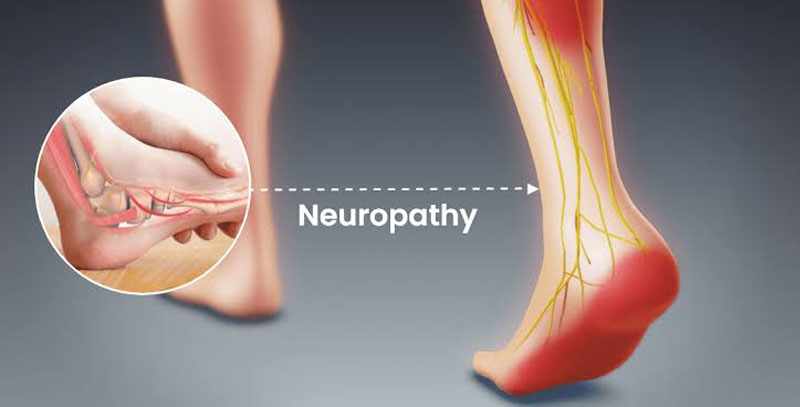
Neuropathy
Types
Based on the nerves affected and the underlying cause, peripheral neuropathy can be classified into different types.
Symptoms
Common symptoms of peripheral neuropathy include -
- Numbness
- Tingling
- Burning
- Shooting pain
- Weakness
- Loss of coordination in the affected areas
These symptoms often start in the hands and feet but can spread to other parts of the body over time.
Causes
Neuropathy can have various causes -
- Autoimmune diseases (such as Guillain-Barré syndrome)
- Infections (such as Lyme disease or HIV)
- Certain medications
- Vitamin deficiencies
- Trauma or injury
- Hereditary conditions
- Exposure to toxins
Diagnosis
Identifying the underlying cause is important for appropriate treatment and management. Neuropathy diagnosis involves
- A thorough physical examination and medical history
Occasional additional tests which include -
- Nerve conduction studies
- Electromyography (EMG)
- Blood tests
- Imaging studies
- Nerve biopsies
Treatment
Treatment for neuropathy aims to -
- Relieve symptoms
- Slow disease progression
Address the underlying cause if possible. This may involve medications to manage pain (such as analgesics, anticonvulsants, or antidepressants), physiotherapy to improve muscle strength and coordination, occupational therapy for functional limitations, and lifestyle modifications (such as blood sugar control in diabetes).
Prognosis
The prognosis for neuropathy depends on -
- The underlying cause
- The severity of nerve damage
- The individual's response to treatment
Some types of neuropathy may be reversible or improve over time, while others may be chronic or progressive.
Early diagnosis and appropriate management can help prevent further nerve damage and improve quality of life.
